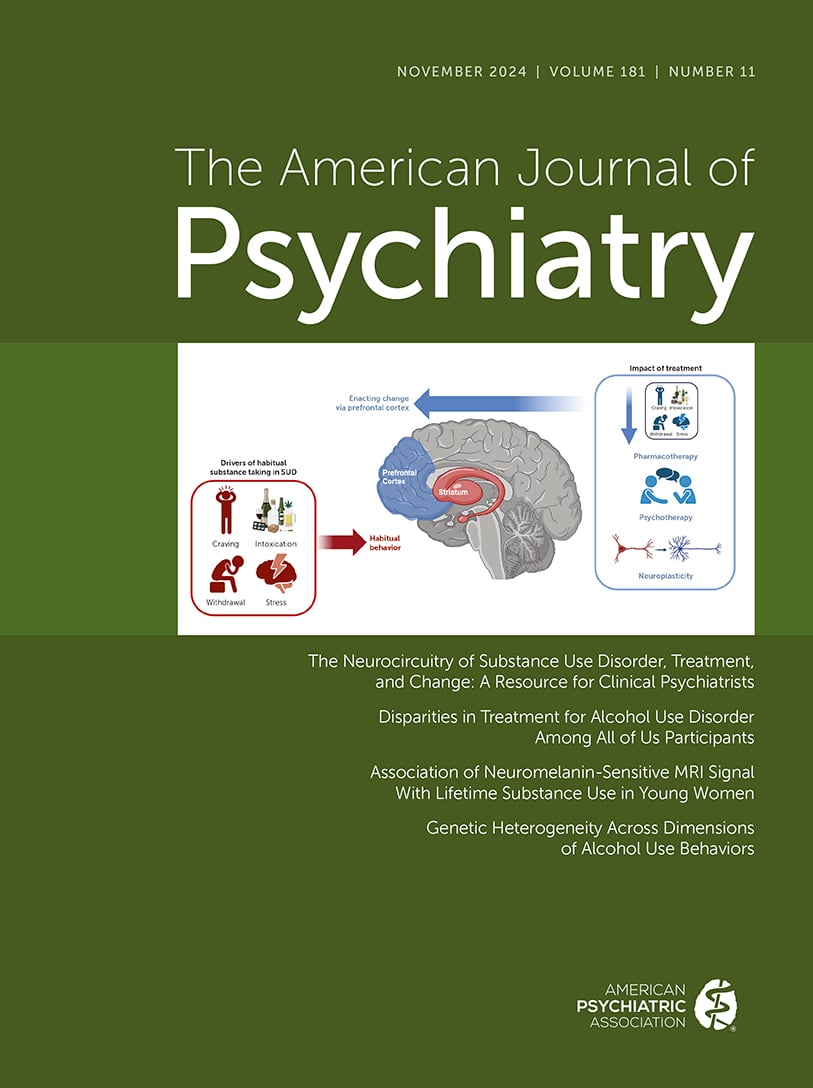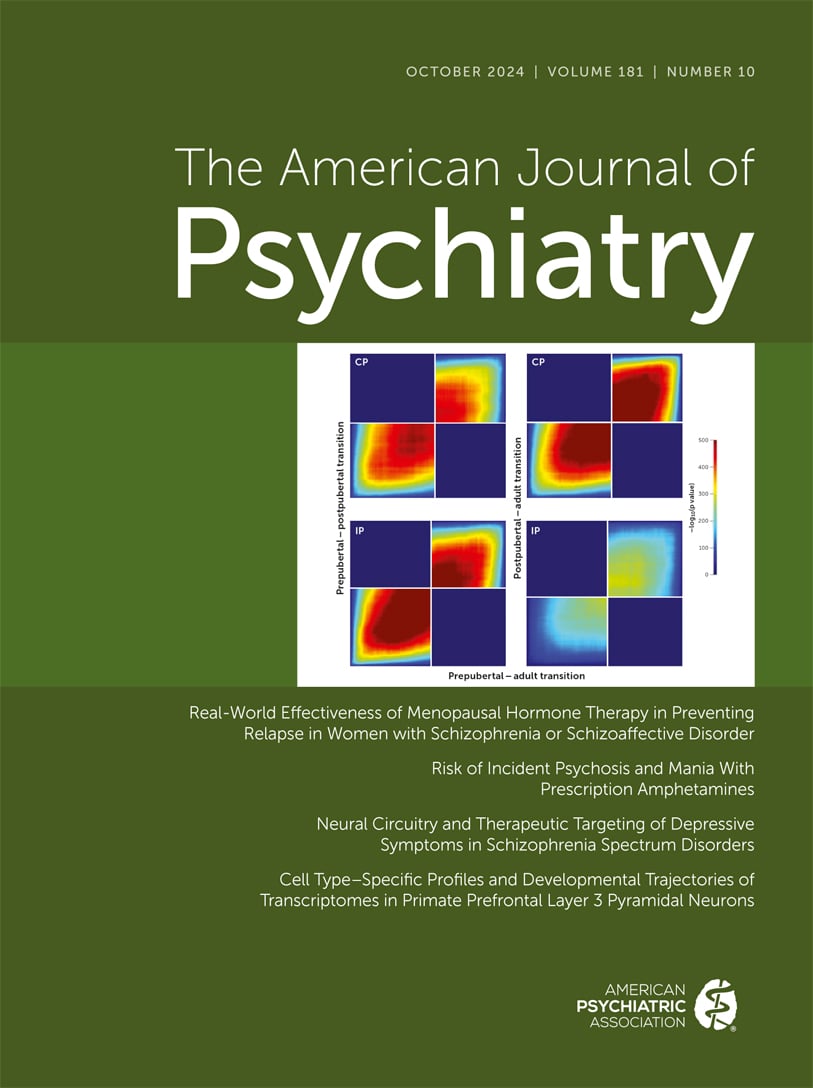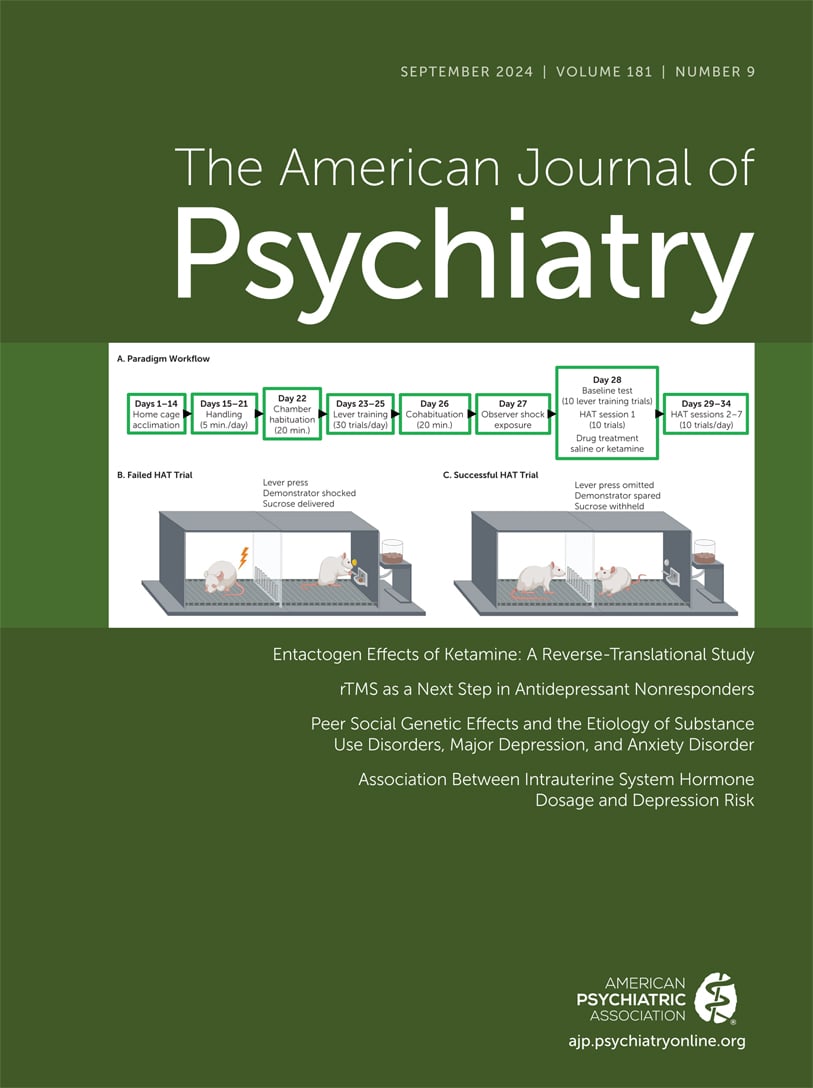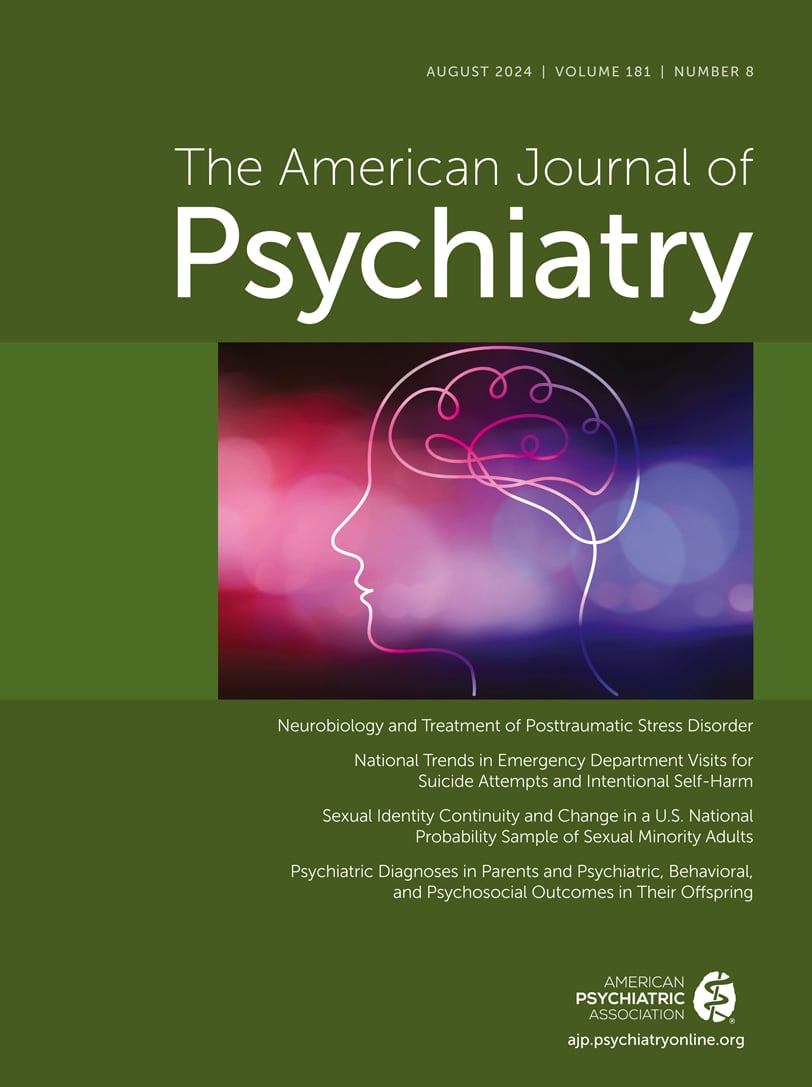American Journal of Psychiatry
- Volume 178
- Number 8
- August 2021
Editor's Note
Editorials
APA Presidential Addresses
Reviews and Overviews
Publication date: 03 June 2021
Pages701–714Although rodent research provides important insights into neural correlates of human psychology, new cortical areas, connections, and cognitive abilities emerged during primate evolution, including human evolution. Comparison of human brains with those of ...
https://doi.org/10.1176/appi.ajp.2020.20081187Articles
Publication date: 17 March 2021
Pages730–743Objective: The heterogeneity of autism spectrum disorder (ASD) and attention deficit hyperactivity disorder (ADHD) preclude definitive identification of neurobiomarkers and biological risks. High clinical overlap suggests multifaceted circuit-level ...
https://doi.org/10.1176/appi.ajp.2020.20070999A Longitudinal Study of Resting-State Connectivity and Response to Psychostimulant Treatment in ADHD
Publication date: 04 June 2021
Pages744–751Objective: Psychostimulants are first-line pharmacological treatments for attention deficit hyperactivity disorder (ADHD), although symptom reduction varies widely between patients and these individual differences in treatment response are poorly ...
https://doi.org/10.1176/appi.ajp.2021.20091342Publication date: 26 April 2021
Pages752–760Objective: Autism spectrum disorder (ASD) is currently considered an early-onset neurodevelopmental condition. Follow-up studies of clinic-ascertained autism suggest that autistic symptoms typically decline with age, although symptom improvement is ...
https://doi.org/10.1176/appi.ajp.2020.20071119Publication date: 22 June 2021
Pages761–770Objective: Maintenance of bodily homeostasis relies on interoceptive mechanisms in the brain to predict and regulate bodily state. While altered neural activation during interoception in specific psychiatric disorders has been reported in many studies, ...
https://doi.org/10.1176/appi.ajp.2020.20091340Publication date: 26 April 2021
Pages771–778Objective: Excessive response to unexpected or “deviant” stimuli during infancy and early childhood represents an early risk marker for anxiety disorders. However, research has yet to delineate the specific brain regions underlying the neonatal response ...
https://doi.org/10.1176/appi.ajp.2020.20050672Past Issues
View Issues Archive
Vol. 181 | No. 11

Vol. 181 | No. 10

Vol. 181 | No. 9
